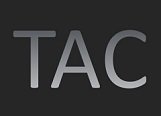POWDER COAT QUALITY COST SAVINGS
In the 1990's, due to EPA regulations, the cost to paint industrial steel products skyrocketed. The disposal of paints and thinners has to be done by qualified and certified disposal teams. In response, companies developed electrostatic powder coat technology. I was called into one that manufactured shelving for home improvement products. The steel parts had a charge applied to them as they traveled along a conveyor through a spray booth where electrostatic powder was sprayed at the parts. As the powder adhered to the surface, heat was applied liquefying the powder and coating the parts. The uniformity of the thickness was important to quality of appearance as well as cost.
The problem of coverage on odd shaped parts presented quality problems. First, to get coverage, excess powder was sprayed and much was lost in the process. Non uniform thicknesses and 'holidays' resulted. A loophole in the EPA regulations allowed for 'tough up' paint using traditional spray paint. Our client had as many as six workers touching up at times. The entire process, was both costly and dubious as to its environmental friendliness.
A team was assembled from factory employees in different roles to analyze the problem and run experiments to see if a more uniform and less wasteful coating could be achieved. The variables to be examined included pressure, temperature, belt speed and fixturing (orientation). We determined that by using Taguchi Design of Experiments, a reasonable number of production runs could be used. A Saturday was chosen so as not to disrupt normal production.
After running the parts through the various combinations of variables, thickness measurements and observational data were collected. Then we applied Analysis of Variance (ANOVA) calculations. While optimum settings for temperature, pressure, and conveyor speed were determined to have some effect on quality, the number one variable was fixturing (orientation). If parts were oriented towards the spray guns properly, the coating was more uniform and had fewer, or no holidays. As fixturing was made on site by the welders, the cost was minimal. The savings were in the millions of dollars.



